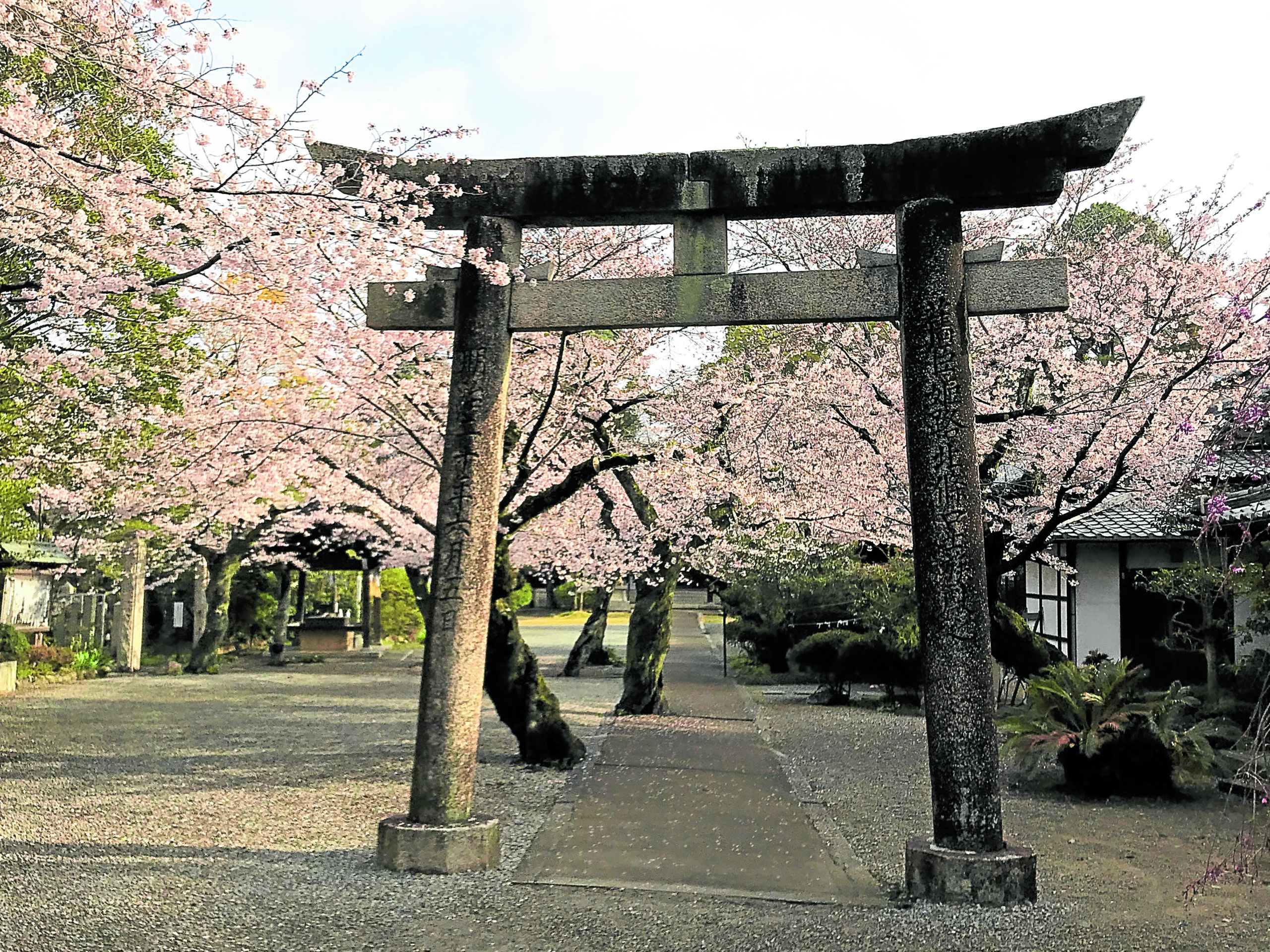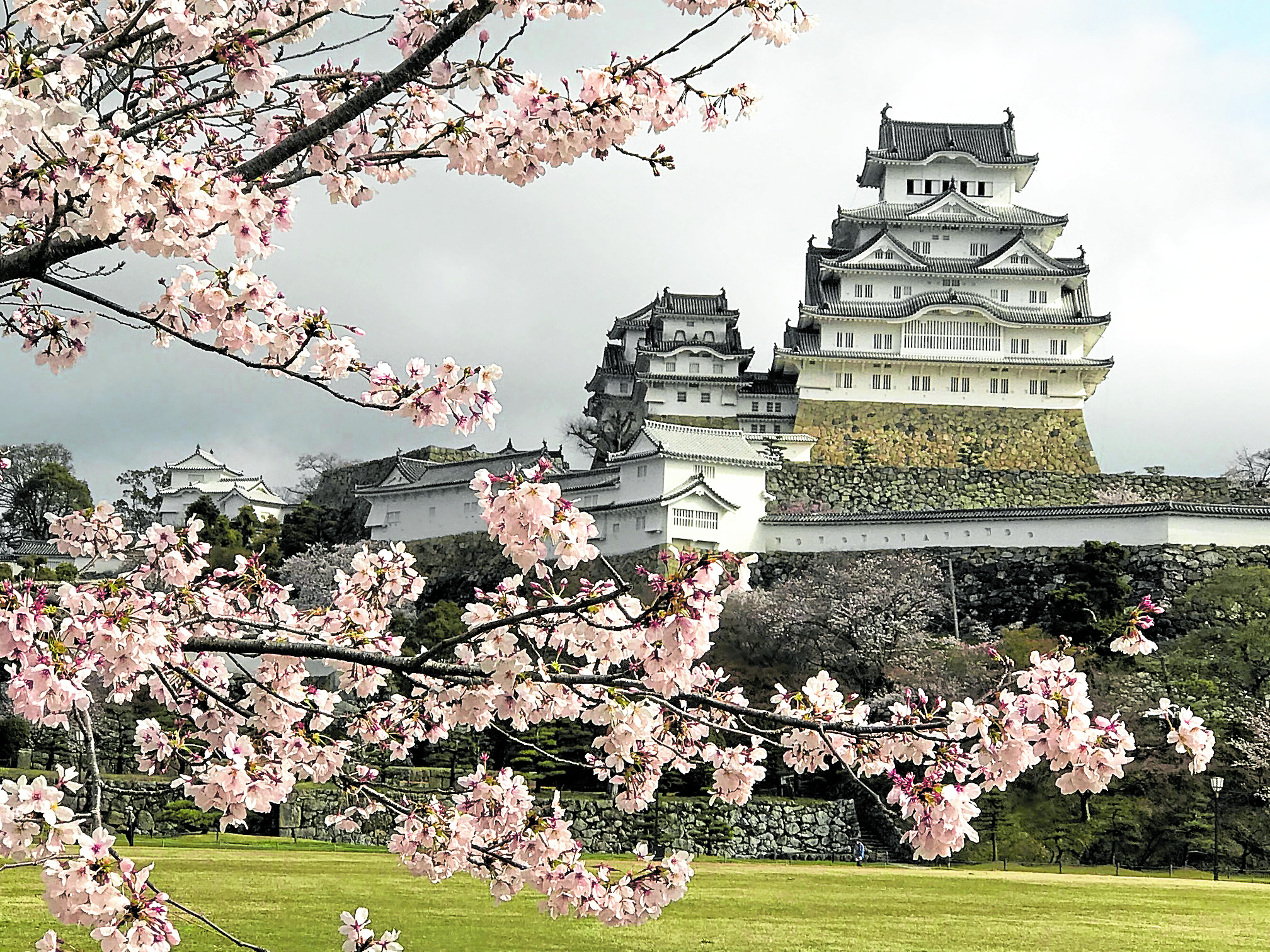
“Mecha ii keshiki desu ne! (‘It’s a really nice view, isn’t it?’),” read the Line message from Yoshi, my language exchange friend who’s about 8,000 km away in Sydney, on a working holiday visa.
He was replying to the photo I sent of Shirasagijo (White Heron Castle), or more popularly known as Himeji Castle. The imposing structure has always been iconic, but the cherry blossom trees serving as its foreground have multiplied the historic castle’s beauty.
I asked my students for must-visit sakura viewing places, and many of them recommended Osaka Castle or Himeji Castle. It’s my first spring in the Kansai area, so I thought I’d do a little bit of exploring.
Don’t get the wrong impression. Japan is still very much dealing with the coronavirus. Tokyo’s state of emergency was lifted just a few weeks ago, on March 21.
In Kansai, where I moved last November after the pandemic forced me to look for a new job, the state of emergency was lifted end of February. People still wear masks wherever they go. Temperature checks and sanitizing one’s hands have become part of the “new normal.” At the eikaiwa where I teach, we have to wipe down students’ armchairs with a disinfectant after every class.
Despite the mood of uncertainty brought about by the pandemic, it’s hard not to notice how the arrival of spring and the blossoming of the much-beloved cherry blossoms still bring a sense of optimism and positivity—two things that everyone could use a bit of right now.
And while it’s not my first time to see the flowers that paint entire towns pink come late March/early April, it is the first time I’ve thought about why the little flowers in various shades of pink play such an important role in the history of the country, its mere sight providing inspiration to poets, artists, and emperors from centuries ago up to people living in the present time.
What lessons can we learn from the sakura?
Good things come to those who wait
On any other time of the year, the sakura trees look dull and boring. People walk past the trees as they go about in their daily lives. The untrained eye wouldn’t think that a tree with all its branches devoid of any signs of life actually suddenly bursts with color and pure beauty come March or April.
Because of this, waiting for the flowers to bloom again the following year is, indeed, a long wait, but it is well worth it—just like how we have to work hard for most things we want before we achieve it.
In Japan, March signifies the end of the school year and the fiscal year for the corporate world.
April, on the other hand, is the start of a brand-new year. Fresh university graduates finally join the company that hired them a year earlier. Students start a new school year. People find new hobbies to undertake, new endeavors to pursue, new resolutions to stick to.
In our eikaiwa, we see an increase in student enrollment around this time. So, if last year one didn’t succeed in their goal, April is a chance to get back in the saddle.
The cherry blossoms bloom around end March/early April, but each tree reaches full bloom at its own pace. Each flower transforms from a bud to a fully opened flower at its own pace.
The same may be said about life. “Mai pesu” (“my pace”) is a phrase often heard from people: for example, mai pesu ni ikiru (live at your own pace). People achieve tasks, reach goals at their own pace sometimes.
Life goes on
It’s been over a year since the coronavirus plunged the entire world into various predicaments. Yet even with everything that’s happening, the sakura continues to blossom every year. Just like with life despite difficult situations, we keep on going and find beauty in the world around us.
“Mono no aware” is one of those Japanese phrases that is difficult to directly translate in English. Its loose translation is “awareness of the transitory nature of things.” And the sakura is one of the greatest teachers of this concept. We wait for many months to see the delicate flowers reach their full bloom, we enjoy their beauty for less than two weeks, and then it is over. The petals start falling to the ground and the time to wait begins anew.
At this time when clouds of doom and gloom seem to be hanging over everyone’s head, we can learn to appreciate what we have now—our jobs, though stressful they may be at times, our time with loved ones no matter how short it is, and so on.
These are but a few lessons the little pink flower can teach us. —CONTRIBUTED









































